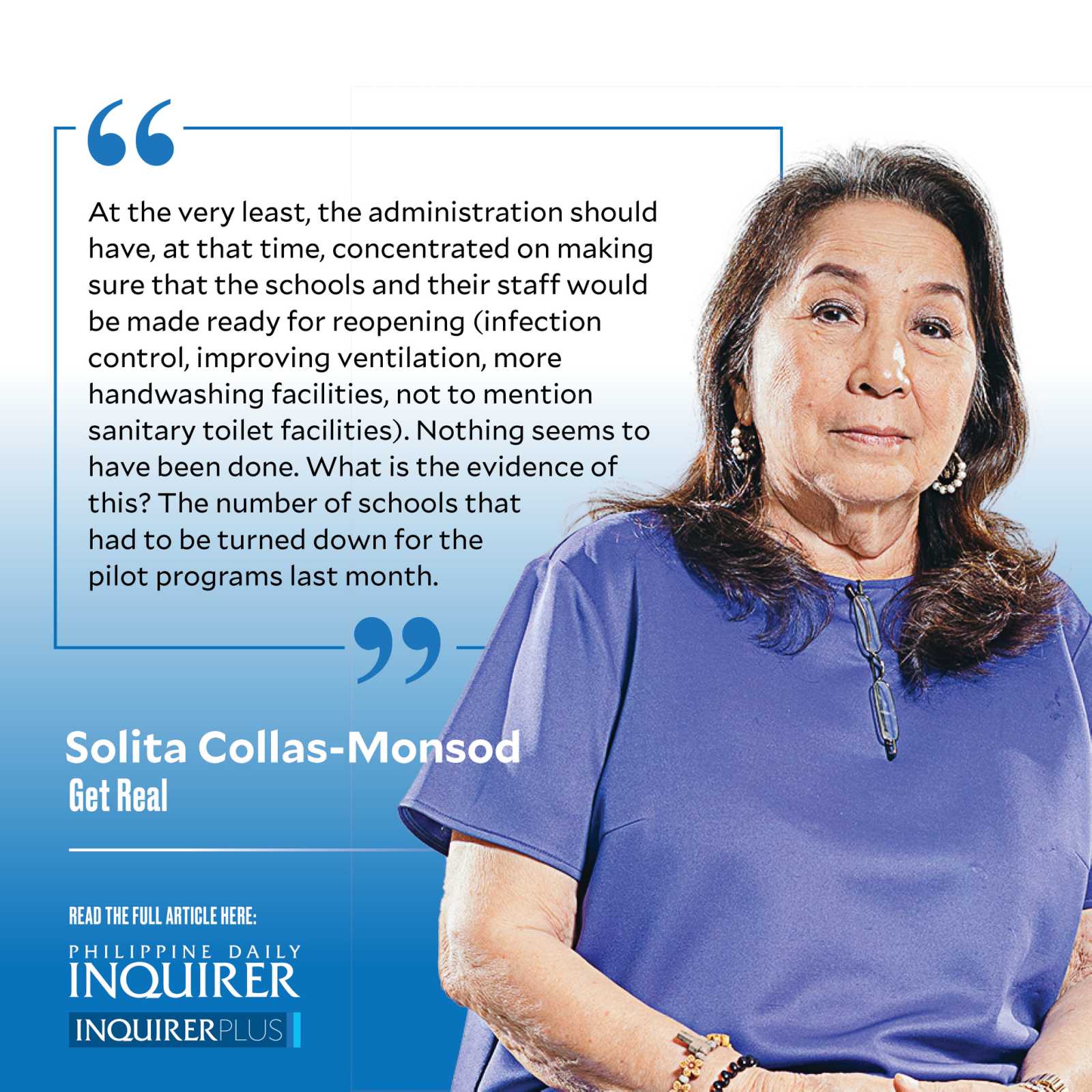Bad decision-making leads to ‘kulelat’ PH

This administration has really brought the Philippines to its knees. Last week, this column wrote about how the government itself (or an agency thereof) evaluated its performance with respect to achieving its targets in the Philippine Development Plan 2017-22. In a word, mediocre. Evidence-based.
This column, comparing country performances, also brought out how this administration presided over the worst economic performance of a country in 2020, vis-à-vis both Asean and the Asean-5. This was the case up to the first quarter of 2021. We’re doing better since, but that’s about it. All you have to do is compare the real GDP growth rates of these countries. Evidence-based.
And then of course, because they go hand in hand, this administration can lay claim to the worst performance on managing the pandemic. That we are doing better at the end of 2021 is very cold comfort, because the administration had a very fat-bottomed and a relatively flat J-shaped learning curve. Anyway, this country will be among the last in Asean-5 to achieve a 60 percent vaccination rate. A 70-percent vaccination rate is even more problematic.
But now it has become very obvious that there is one more “worst” to claim. We may be the last country in the world, per the Unicef reports, to go back to face-to-face classes. We were neck and neck with Venezuela, but that country did it on Oct. 25. We started piloting face-to-face classes last month.
I bring this out to illustrate how decision-making, especially at the top, is very seldom evidence-based, and very costly to us Filipinos.
It was on May 26, 2020, that President Duterte announced that students would not return to school (face-to-face) until a COVID-19 vaccine is available, and “if no one graduates, so be it.” I remember reading that he said, “Pabayaan maglaro muna sila” (!), and asking myself, where would they play during a lockdown?
Granted there was very little evidence to go by regarding the effect of reopening schools on COVID-19 transmission. But certainly, at that time, there was clear evidence of the harm prolonged school closure could visit on the children. These harms are greater in more deprived families. And there are indirect harms as well.
So at the very least, the administration should have, at that time, concentrated on making sure that the schools and their staff would be made ready for reopening (infection control, improving ventilation, more handwashing facilities, not to mention sanitary toilet facilities). Nothing seems to have been done. What is the evidence of this? The number of schools that had to be turned down for the pilot programs last month. I would really like to know how many of our more than 40,000 public elementary schools have been upgraded, not to mention the more than 10,000 public secondary schools.
Three months later (August 2020), a study had already been published online by the Archives of Disease in Childhood, titled “Reopening Schools During the Covid-19 pandemic: governments must balance the uncertainty and risks of reopening schools against the clear harms associated with prolonged closure.” Among its findings: Data from previous outbreaks suggest that schoolchildren may play only a relatively small role in the transmission of coronaviruses; an Australian study showed that there was almost no transmission in schools there; when children do get COVID-19, there is clear evidence that they are very unlikely to get very sick and die.
And the Lancet Commission on COVID-19, in its report to the UN General Assembly in September 2020, echoed the same findings. Neda’s Karl Chua drew the same conclusions three months ago, with additional Philippine data.
So it seemed that the way would be clear for school reopenings with the necessary health protocols; the benefits far outweighed the costs.
But it took another three months before the President and his Cabinet approved the reopening of “very select schools within low-risk COVID areas.” This was announced on Dec. 15, 2020, and welcomed by Unicef, which was wringing its hands because of the known effects on the children and their families of school closures.
Just 11 days later, however, the President revoked this approval. And it stayed revoked for another nine months. The cost of all this? Chua last September estimated the loss for school year 2020-21 to be P390 billion, plus another P11 trillion over the next 40 years.
The Philippines is kulelat again.
——————
solita_monsod@yahoo.com
For more news about the novel coronavirus click here.
What you need to know about Coronavirus.
For more information on COVID-19, call the DOH Hotline: (02) 86517800 local 1149/1150.
The Inquirer Foundation supports our healthcare frontliners and is still accepting cash donations to be deposited at Banco de Oro (BDO) current account #007960018860 or donate through PayMaya using this link.




















